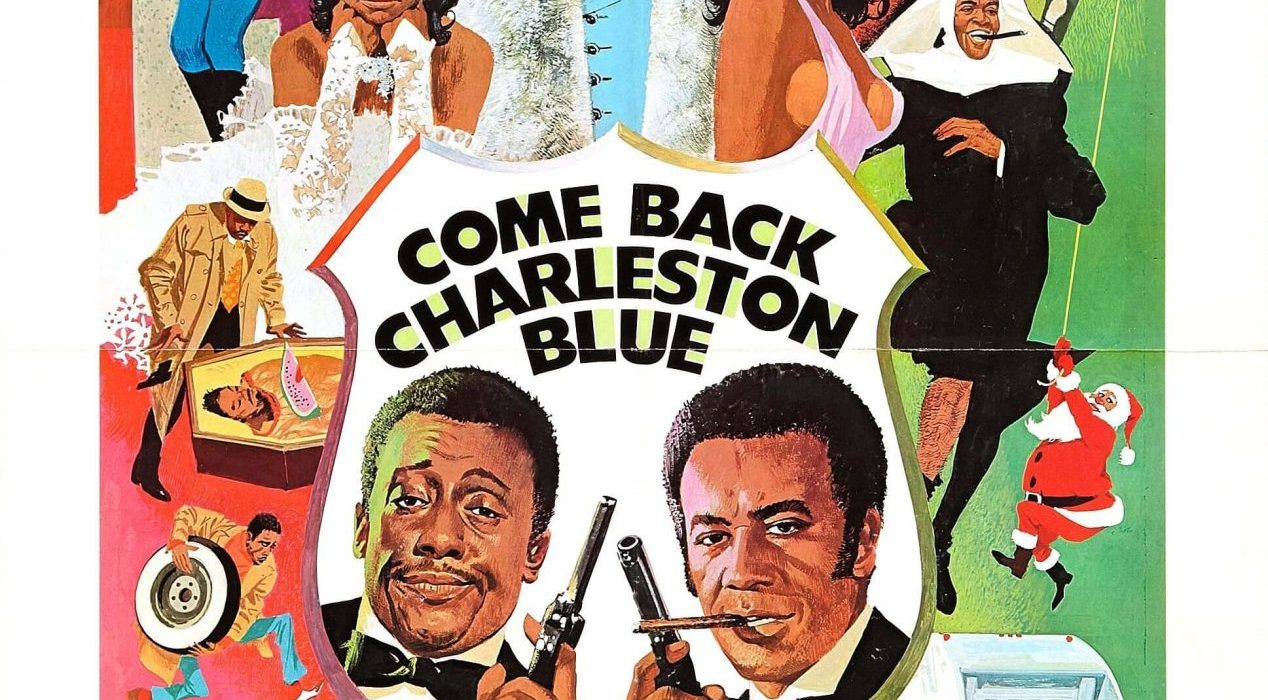Starring: Godfrey Cambridge, Raymond St. Jacques, Peter De Anda, Minnie Gentry and Jonelle Allen
Rated: PG Action/Comedy/Crime
Based loosely on the novel, The Heat is On, by Chester Himes, Come Back Charleston Blue is the follow-up to his Cotton Comes to Harlem, which was adapted to film and released in theatres two years prior. It features the Harlem detectives, “Coffin” Ed Johnson (Raymond St. Jacques) and “Gravedigger” Jones (Godfrey Cambridge) on another outrageous adventure to keep their community and its citizens safe from corruption.
In this film, the detectives are struggling to solve the murders of key hustlers, gangsters and traffickers, but what makes the murders bizarre are the gleaming, customized straight razors of blue steel that are left at the scenes.
According to fortune-teller and numbers prophetess, Her Majesty (Minnie Gentry), that type of razor was the “signature” of Black gangster, Charleston Blue, who hailed from North Carolina. Charleston Blue disappeared after seeking to rid Harlem of real-life, Jewish gangster Dutch Schultz for his exploitation of Blacks in Harlem. Because he never returned, many presumed Charleston Blue was dead, except for Her Majesty. He was her beau and he trusted her to keep his other razors locked safely away until his return.
Adding to this intriguing mix are an ex-military officer & photographer, Joe Painter (Peter De Anda); his debutante girlfriend, Carol (Jonelle Allen), who is the niece of Harlem mobster, Caspar Brown (also seen in Cotton Comes to Harlem); a cross-dressing, bombs expert; a Black-conscious “tween”, amateur scientist; and of course, an Italian mob boss. When Johnson and Jones discover the cerulean razors are missing, they must solve the case before anyone else is killed … and time is running out!
While this film did not do as well as its predecessor at the box office, it has become a cult classic. Factors that impacted the reception of Come Back, Charleston Blue were different from those that influenced the release of Cotton Comes to Harlem, and one of the most important factors was, simply, time. In the two years between releases of the Himes’ novels as films, the motion picture industry recognized the power of presenting stories that appealed to Black moviegoers. Thus, what had been previously a dearth of material available now was a fountain of content that quickly oversaturated the industry. Unfortunately, this oversaturation all too often led to Black films having poor quality, ranging from the sparsely-developed plotlines to unqualified actors. There was even coined a new term, “Blaxploitation”, to describe this type of films that played to negative stereotypes of Black life. This led to despairing realities for trained Black actors who refused to act in Blaxploitation films.
Also influencing the reception of Come Back, Charleston, Blue was the change in direction, literally, and sound. While Ossie Davis directed Cotton Comes to Harlem and Galt MacDermot created the soundtrack, Davis could not agree with studio heads at MGM about the artistic changes transitioning the novel into a film. Davis left the project and Mark Warren was hired to direct it. In the two-year span between the release of Cotton Comes to Harlem and Come Back, Charleston Blue, movie studios also realized that the soundtrack of Black films could provide more financial success to their movie profits. This was proven most notably with Isaac Hayes soundtrack to Shaft and Curtis Mayfield soundtrack to Superfly. As such, R & B soul great, composer and singer, Donny Hathaway was hired to create the soundtrack for Come Back, Charleston Blue.
The Harlem Cycle of Chester Himes is still one of the best-selling, hardboiled series written. Its content is an incredible feat of ironies: complex yet simple; bare but detailed, steady and frenetic; ugly but beautiful. As such, the novels and films have remained one of the strongest and most enduring contributions to urban fiction!

